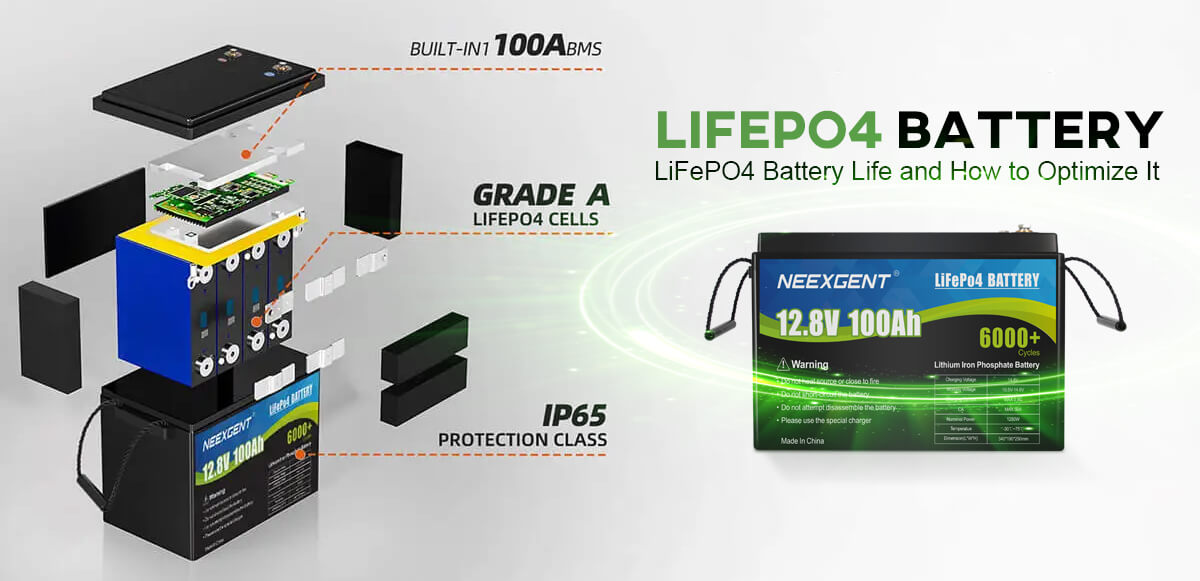Contents:
Introduction
The advantages of lithium iron phosphate batteries have made them increasingly useful in a variety of areas, including electric vehicles, storage of solar energy, and backup power systems. This is because, the these batteries have high level of safety, they are thermally stable and speak volume in terms of cycle life. The need to understand and appreciate the various factors that affect the lifespan of such batteries and the measures that can be taken to maximize their performance optimally is critical to both users and manufacturers. This article will focus on the lifespan of LiFePO4 batteries, the contributing factors of their lifespan and recovery strategies to improve their lifespan.

Understanding LiFePO4 Batteries
LiFePO4 affords a lithium-ion battery also, in which the cathode material is lithium iron phosphate. This chemical composition has a few advantages over other lithium-ion technologies such as lithium cobalt oxide and lithium manganese oxide battery technologies. Major advantages brought by the use of LiFePO4 batteries include:
- Security: There is a high tolerance to fire and explosions resulting from thermal runaway and other actions, allowing the batteries to be used in a variety of ways.
- Long Cycle Life: LiFePO4 batteries are designed to undergo 2000 to 5000 charge cycles on average which is way above any other types of lithium battery. Owing to the fact that most other types of lithium batteries last about 500 to 2000 cycles, this figure barkens enhancement.
- Stability: These batteries have a constant voltage throughout the discharge cycle that delivers module based power to the device.
Factors Affecting Lifespan
- Charge and Discharge Rates: Charge and discharge rates are important in determining the lifespan of batteries and need to be controlled. High charge rates can cause too much heat which causes depletion of the battery life. Similarly, quick discharges can seek too much strain on the internal structure of the battery. These performance parameters should be respected in order to prolong the life span of the battery.
- Temperature Sensitivity: LiFePO4 batteries give the best results at 20-30 degrees centigrade (68-86 degrees farenheit) (400-600) . With excessive heat battery packs may suffer as a result of thermal over stressing and lower battery capacity inversely extreme cold weather can cause poor performance and loss of battery capacity. Hence, it is imperative that acceptable temperature conditions be maintained.
- Depth of Discharge (DoD): In simple terms, it can be described as the last percentage of a battery capacity that has been applied. Using a battery to up to its cuts limits within a shot period will negatively affect the life span of the battery. To use LiFePO4 batteries for extended periods, maintaining depth of discharge ( Do D) around 50 % level is encouraged.
- Storage Conditions: The manner in which batteries are stored is also important in preserving good health of a battery. The best state of the battery is one that is half full and placed in a cool and dry place when the battery is not in use. This helps in preventing deterioration that can result due to extreme time being idle.
- Cycle Frequency: Repeatedly cycling will tend to cause the battery to be overworked and more susceptible to aging. It is imperative to manage the consumption so as to minimize the number of cycles that will cause rapid wear and tear.

Plan to Increase Life Span of Any Item
- Proper Active Charge Management: The use of a quality BMS can extend normal management by making sure that each cell is balanced during each charging cycle and preventing any chances of overcharging. BMSs are also able to assess voltage or temperature, which produces feedback intended to enhance performance.
- Temperature Management: The configuration of additional thermal management systems can also help in ensuring that desired ambient space temperature will be maintained. This may include the use of e .g. fans or active coolers for the system in applications where the batteries operate under high ambient temperature conditions such as in electric vehicles, or renewable systems.
- Periodic Maintenance and Surveillance: Periodic battery monitoring which includes assessment of voltages and temperatures in order to avert the emergence of underlying conditions can be useful. Constant cleaning of battery terminals as well as making sure that the connections are tight are among the methods which help in avoiding loss of energy and achieving better efficiency in terms of output.
- Good Using Principles: In order to maximize lifespan, several recommendations are made, including; do not fully discharge nor charge vigorously. Practise partial, shallow discharges and moderate charging. Patterns of use should be embraced to ensure the battery does not deteriorate any faster than required.
- Cycle Management: Getting there, use a cycle management strategy where one varies both the depth of discharge and the rate at which the battery is charged in order to reduce the strain taken by the battery. This may include maintaining the battery above a certain discharge level to prevent excessive battery wear and tear thus increasing battery life.
- Environmental Considerations: In any case, extreme environmental impacts should be averted if possible. For those applications which are subject to environmental exposure, battery enclosures or insulating protective materials may absorb most of these temperature changes and humidity.
Conclusion
In terms of battery performance and its cycle life, LiFePO4 batteries emerging in today's battery technology represents a great change. Nonetheless, to take full advantage of these benefits, it is imperative to comprehend what determines their longevity and apply relevant optimization techniques. LiFePO4 battery lifespan can be improved by observing good charging practices, good temperature practices and regular maintenance of the batteries. As the availability of effective energy storage systems becomes increasingly imperative, battery technology optimization for sustainable use and efficiency in various sectors will be highly prioritized. Ultimately, these strategies will guarantee maximum or full utilization of LiFePO4 batteries in an energy market of high demand for conservation.
FAQs:
Are LiFePO4 batteries capable of being charged quickly and still have a long lifespan?
It is possible to fast charge a LiFePO4 battery but too much of fast charging may lead to degradation of the battery life. For the sake of the battery life, it is useful to charge it at a normal rate.
Is there a direct relationship between charge cycles and the life of LiFePO4 batteries?
Yes. The more charge cycles LiFePO4 battery undergoes the more the capacity will continuously reduce in some minimum percentage. However there are ways in which this decline in capacity can be modulated through proper usage and management thus enhancing the number of usable cycles.
Does a LiFePO4 battery life extend with the help of repetitive maintenance?
Through periodic maintenance which includes taking readings of voltage and temperature, cleaning connections and terminals and checking connections, performance enhancement is evident and extends the life cycle of the battery.
What principle explains the need for a Battery Management System (BMS) in LiFePO4 batteries?
A battery management system works to ensure that the battery is charged and discharged in balanced amounts, prevents over discharge and overheating of the battery for LiFePO4 batteries which is why their shelf life is enhanced.
How effective is cycle management in enhancing the life of a LiFePO4 battery?
Having a cycle management approach such as equalizing the discharge depths and avoiding excessive full cycles ensures lesser stress and prolongs the battery life cycle.







